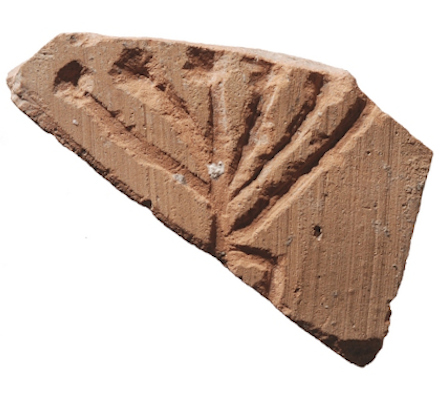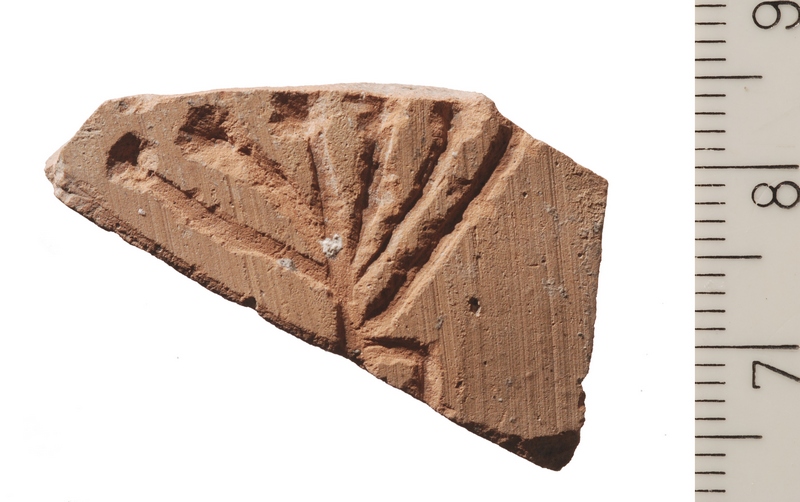A Potsherd from the Temple Mount with an Incision that Resembles the Temple Menorah
Want to help decipher an archaeological mystery?
A very interesting incised design appears on an ancient potsherd found in the sifting of the soil from the Temple Mount . Is it the Temple Menorah? Some kind of floral design? Something else? How can we date this potsherd? When was the incision done? By whom and for what purpose?
If it is a menorah, what can we learn from this artifact?
All these questions are currently being debated by the archaeologists studying this potsherd.
We welcome your suggestions…
Discover more from The Temple Mount Sifting Project
Subscribe to get the latest posts sent to your email.







Even though it may have seven stems, it’s just a floral representation with a symbolic number of seven stems coming out of a pot. Anyway, my study shows that the commonly believed date of the Temple is not supported by anything archaeological or scientific. The real Salomon and his temple belonged to the 19th century BC, when there was a real Canaanite city state centered on Jerusalem. Especially considering the fact that in the 14th century BC Jerusalem itself as a city was already named (or nicknamed) the Temple of Salomon, four centuries earlier than the beginning of the Divided Kingdom, the supposed time Salomon died, when Jerusalem had been nothing but a cow town since at least the 13th century. Whatever has been built in the 10th century BC can not have been the original Temple of Salomon, and was probably just a memorial.
I don’t know what the symbol depicts but I wonder if it has five ‘branches’ not six. The line on the far right looks longer and deeper than the others. I think this is part of a different section of the image.
Menorah according to the opinion of the Ramb.
And Chabad….
seven branched candle stick Menorah
Tree of Life
Looks like stylized feathers. The crest of a Hoopoe bird maybe.
It looks like a schematic of the River Nile Delta.
My graduate degree focused on the history of medicine, hard and occult sciences, and theology of Byzatium in antiquity. My first thought is that this is a section of a magical charaktere maybe on an amulet made of potsherd. Amulets were commonly made of bronze, gold or gemstones but I think some have been found made of potsherd. Coptic Christians in the 5th and 6th centuries commonly used charakteres in their manuscripts and amulets. Perhaps this is an amulet of a Coptic Christian who made a pilgrimage to Jerusalem before it fell to the Muslim Saracens in the 7th century? I believe the Kabbalist sect of Jews also used these magical symbols. Also the Gnostics were fond of them.I’ve been looking through my reference books and have only found one that has this branching design. It is in the Bruce Codex, Bodleian Library, Oxford; The text where the symbol is, is in Chapter 46 of the Second Book of Jeu. There is also a website Chakateres.com where a scholar is trying to catalog them. It is in German which I can’t read so I’m not sure how to actually access the papers. Hope this might help!
It looks like a small Dragons blood tree (Dracaena cinnabari) which is common to the island of Socotra in Yemen.
http://www.amusingplanet.com/2012/05/socotra-island-of-strange-plants.html
Also resembles a palm frond as thrown in front of Jesus upon his entry into Jerusalem and a symbol of Christian martyrs.
If this was pottery it would have been spun on a wheel. If so, the rub marks should be horizontal? (Going around the pot?)
Thank You all for your comments and suggestions. Some are very original “-) See latest Jerusalem Post report about this potsherd at:
http://www.jpost.com/Israel-News/Byzantine-era-potsherd-from-Temple-Mount-may-contain-engraving-of-holy-sites-menorah-436965
Looking at the potsherd I see what’s left of a man holding a palm leaf over his right shoulder. At first I could agree that it may be a menorah but looking at what I would believe was the base portion at the bottom right it didn’t seem to have the right shape for the base of a menorah. Upon further study of the picture the base appeared to have what’s left of the outline of a crudely inscribed face. If so this would put the palm leaf on the right shoulder. I know that’s a big jump but, in that area at that time and to some extent now I’m sure people still carry palm leaf’s for home decoration or use. Thanks for letting me post a suggestion I hope it helps or at least gets a smile from someone else with an active imagination.
Dear Folks,
In all honesty, I would have to say that what you are looking at is a Menora, but the artwork is crude, very rough from what one would expect of an experienced maker of marks on clay, be it pot or inscription. I think it is a student’s mistake, this was a ‘try’ that was rejected – or the artist was not up to the task.
jmho.
The comments and replies to them would be easier to follow if the earliest started immediately after the blog post instead of their starting with the most recent.
thanks for the feedback. We’ve changed the setting accordingly.
Thanks.
Thanks everyone for the very interesting suggestions and comments. You are welcome to view Gabriel Barkay’s current understanding of the object at:
https://youtu.be/gEqviV2X4vg
the top of relic appears to be six stars of seven stars the same stars you can. find on their ancient money
also appears to look like the tree of live